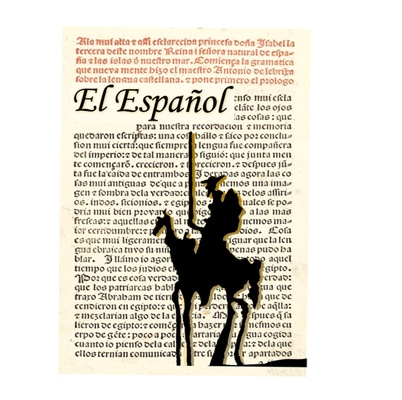Spanish is one of the most important languages in the world. But what exactly is language?
Language emerged due to man’s need to communicate with others. In prehistoric times, men communicated through very simple oral, and sometimes written, language, and made drawings that highlighted their adventures and experiences.
The Greeks developed the first alphabet, giving a specific sound to each sign. This alphabet was the precursor of the Roman alphabet, which is very similar to the one we use today.
| A language is the mirror of its culture. Through it, through the words of each language, we can observe the peculiarities or characteristics of the people that speak it. |
Language brings with it the flavors, colors, and smells of each country. For example, when we hear the word, fiesta our mind brings forth images of Mexican joyfulness, and what can we say about a resounding Ole What do we imagine? ….. of course!….. the Spanish traditions.
And through language, we express not only our opinions and thoughts but our history, our cultural roots, our origins.
Today there are about 5000 different languages spoken in the world. The most frequently spoken languages are English, Spanish, French, Portuguese, Chinese, Russian and Arabic.
The world is increasingly interdependent; this means that we constantly have to deal with people or companies from other countries. Individuals who have the skill to master another language will be more able to be successful in this new world. There are many work opportunities for people who know how to speak another language.
In particular, learning Spanish gives us the possibility to communicate with an entire continent! Around 400 million people speak Spanish as their native language. From Spain to Argentina!
For the United States, Latin America and in particular Mexico, are the most important markets commercially, and it is one of our closest neighbors. Speaking of international trade, thousands of products are exported to these countries.
Mexico is one of our most important trade partners! If we take a short trip through Mexican stores, we find hundreds of products from the United States: chocolates, cereals, clothing, electrical appliances, cars.
Our country also consumes thousands of products from the Spanish-speaking world.
Spanish is spoken by close to 400 million people throughout 19 million square kilometers, and it constitutes the fourth most frequently spoken language in the world.
Its origins go back to the period when Rome was established as the Great Roman Empire and imposed Latin as the official language. Latin began to be mixed with the languages spoken in faraway conquered places and as time elapsed, it became transformed and acquired peculiar characteristics, giving rise to languages such as Spanish, French and Italian.
Spanish has been influenced by other languages, especially Arabic since the Iberian Peninsula was for several centuries under the rule of the Moors. Words like Guadalupe, almohada (pillow), algodón (cotton), tabaco (tobacco), ojalá (hopefully).
By the 15th century, Spain had become a world power. With its desires to become one of the most powerful empires, it financed the travels of Christopher Columbus, and this is how, as we know, this sailor reached America in 1492.
And it was also in 1492 when, coincidentally, the first Grammar of the Castillian, Spanish Language, was published. Thus, it was destiny for the Spanish language to reach our continent along with Columbus.
During the years after this event, the Spaniards conquered a large part of what today is the American continent. The Spaniards imposed their language as well as their religion on these native peoples.
The Spaniards conquered all these great indigenous civilizations, and thus, through the Conquest, these territories became Spanish colonies. It was the monks who were in charge of teaching the new Catholic religion and the new language. Soon the Spanish language was spoken in a large part of America.
The Spanish language was also enriched with many words of native origin such as chocolate, chocolate, jitomate, tomato, and papa, potato.
During the sixteenth and seventeenth centuries, Spanish orthography and pronunciation were consolidated.
Spanish became the major diplomatic language until the eighteenth century.
As with geographic diversity, Spanish is spoken in different ways in the Hispanic countries, just as there are differences between American and British English. For example, potato or papa in Mexico, is patata in Spain.
However, the spelling of the written words in Spanish does not change from place to place, in contrast to English, in which certain words are written differently in the United States and in Great Britain.
This is because the Spanish language has a directing body called the Real Academia de la Lengua Espanola, or Royal Academy of the Spanish Language. This body establishes spelling rules and records new words that appear in the language. The Academy was founded in Madrid in 1713.
All the Spanish-speaking countries have Academies of the language that come under the Academy in Madrid.


